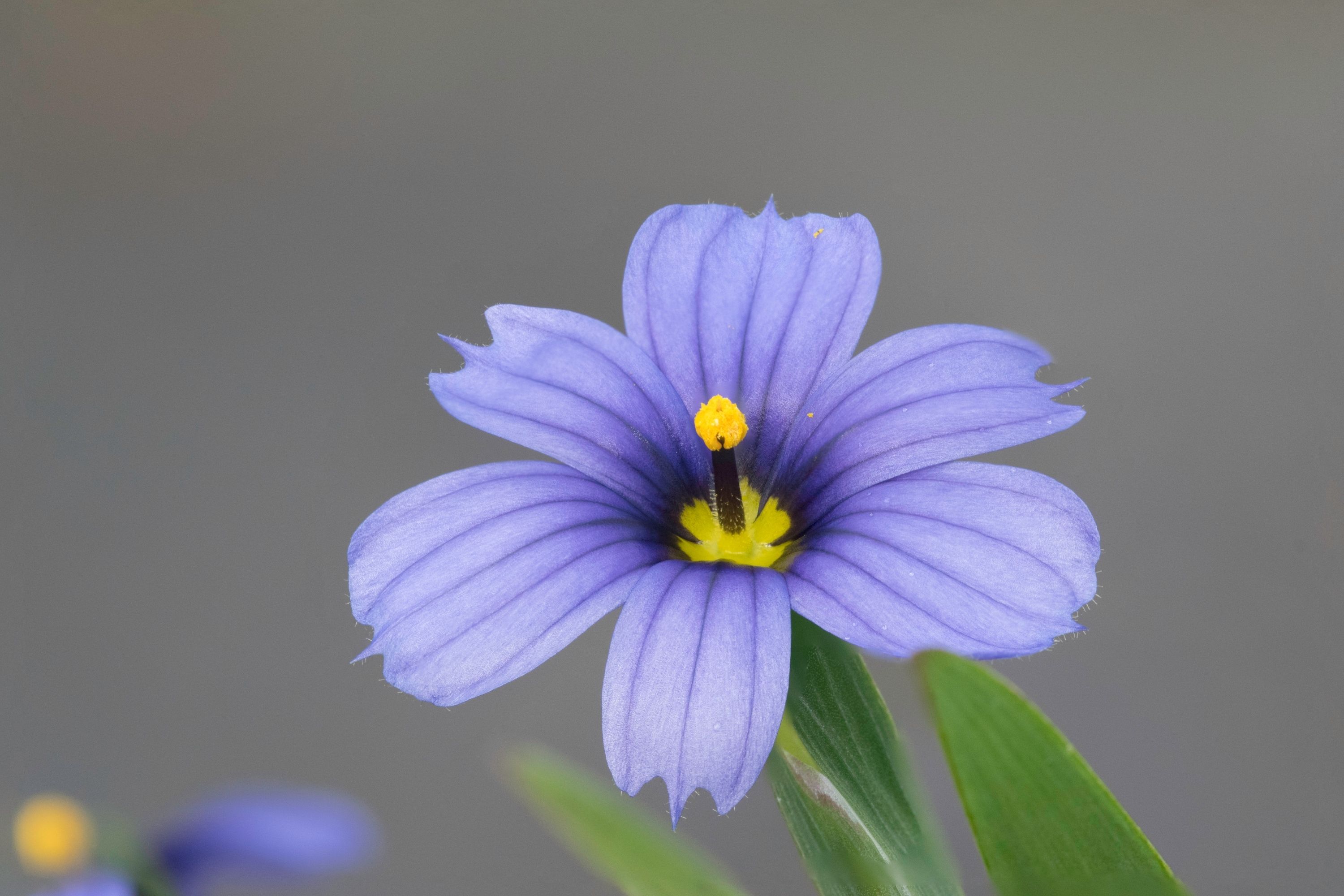Funeral Mountain blue-eyed grass
(Sisyrinchium funereum)

Description
Sisyrinchium funereum is an uncommon species of flowering plant in the family Iridaceae known by the common names Funeral Mountain blue-eyed grass and Death Valley blue-eyed-grass. It is endemic to the Mojave Desert of the United States, where it is known only from the Funeral Mountains and Death Valley area in eastern California, and the Ash Meadows area just over the border in Nevada. It grows in wet, highly alkaline habitat, such as seeps and mineral springs. Sisyrinchium funereum is rhizomatous perennial herb takes a clumpy form, producing pale green, waxy stems up to 70 to 76 centimeters in maximum height. The flower has six tepals measuring up to 1.5 centimeters long. They are light blue to purple-blue with yellow bases. The tepal tips are often squared or notched. The fruit is a beige capsule. Sisyrinchium is a large genus of annual to perennial flowering plant in the family Iridaceae. Native to the New World, the species are known as blue-eyed grasses and, though not true grasses and in varieties with flower colors other than blue, are monocots. Several species in the eastern United States are threatened or endangered. These are not true grasses, but many species have the general appearance of grasses, as they are low-growing plants with long, thin leaves. They often grow on grasslands. Many species resemble irises, to which they are more closely related. Most species grow as perennial plants, from a rhizome, though some are short-lived (e.g. S. striatum), and some are annuals (e.g. S. iridifolium). The flowers are relatively simple and often grow in clusters. Many species, particularly the South American ones, are not blue, despite the common name. The genus includes species with blue, white, yellow, and purple petals, often with a contrasting centre. Of the species in the United States, the Western Blue-eyed Grass, Sisyrinchium bellum, is sometimes found with white flowers, while the California Golden-eyed Grass, Sisyrinchium californicum, has yellow flowers. The genus was named by Carl Linnaeus in 1753, based on the species Sisyrinchium bermudiana (commonly called Bermudiana). Sisyrinchíon is the Greek word, recorded by Pliny and Theophrastus, for the Barbary nut iris (Iris or Moraea sisyrinchium), and refers to the way the corm tunics resemble a shaggy goat's-hair coat, sisýra. Authors as early as 1666 give the dubious etymology of Latin sūs "pig" and Greek rhynchos "nose", referring to pigs grubbing the roots.
Taxonomic tree:







